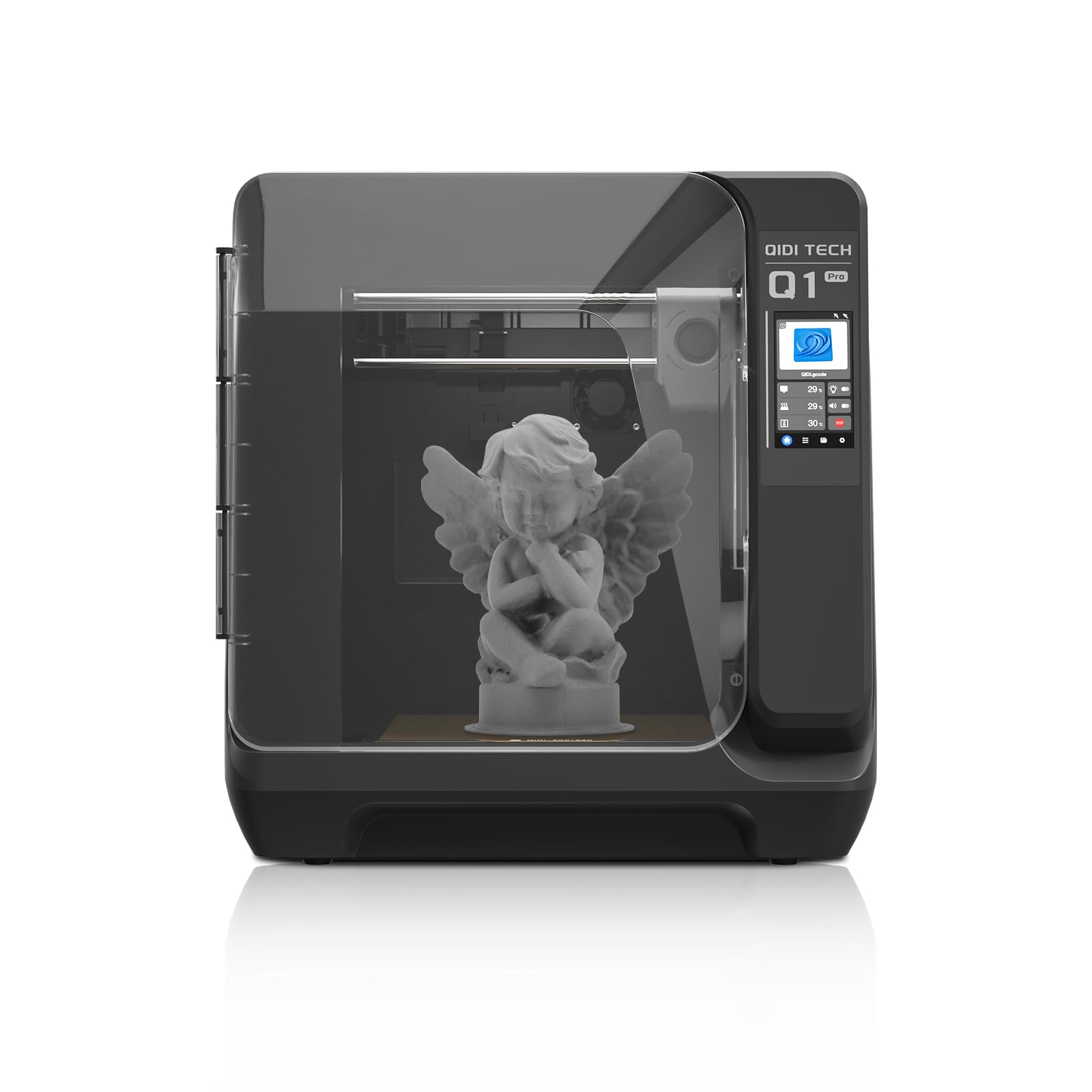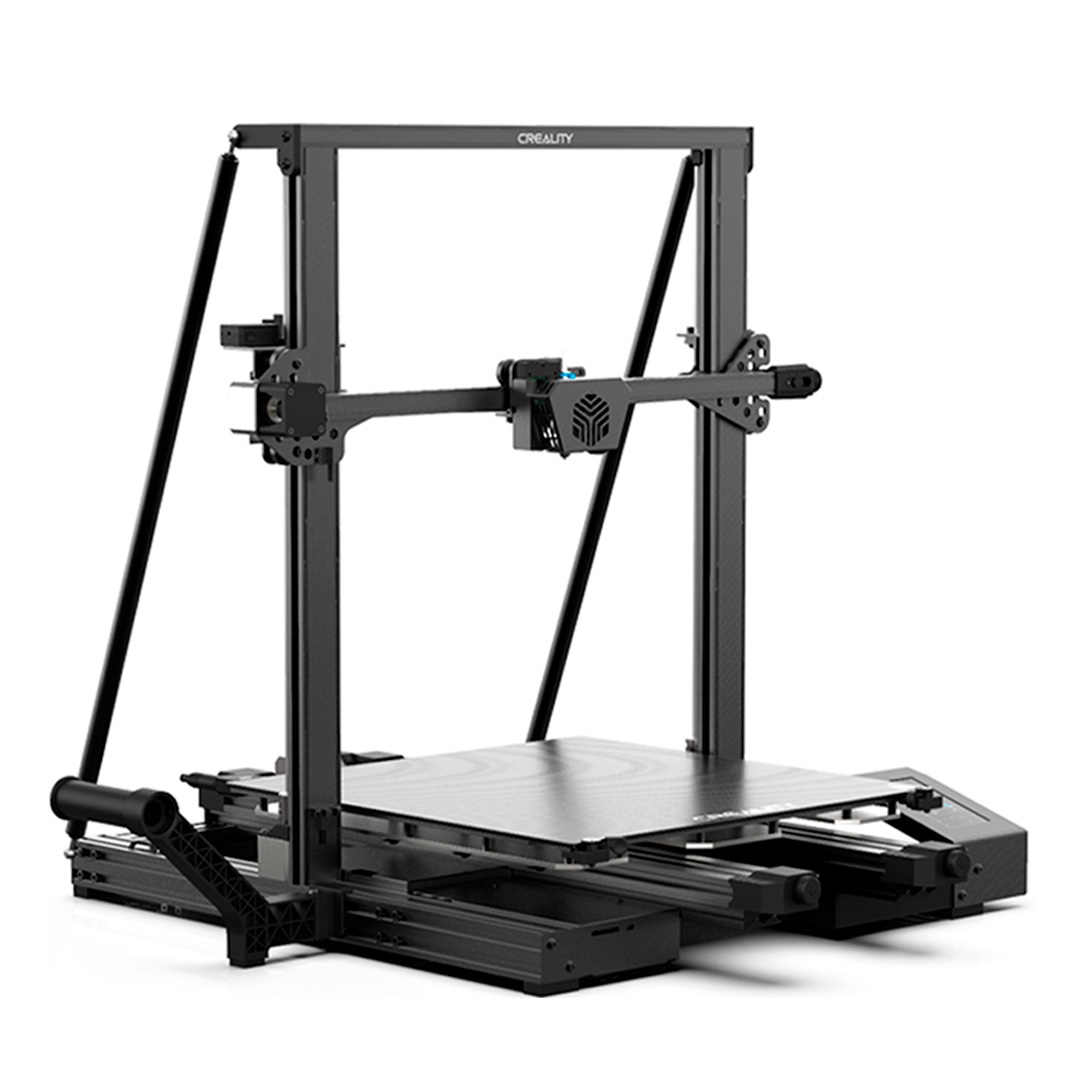Compare Q1 PRO vs CR 6 Max
Comparison between the best 3D printers
Choose the best 3D printer at the best price. The cheapest 3D printers are here.
Buy a 3D printer here with 3D Fila.
 |
 |
|
| Model | Q1 PRO[BUY Q1 PRO] |
CR 6 Max |
| Printing Material | Filament | Filament |
| Buy Filament for QIDI Q1 PRO | Buy Filament forCreality 3D CR 6 Max | |
| Estimated price | $449,00 | $700,00 |
| Manufacturer | QIDI | Creality 3D |
| Release Year | 2024 | 2021 |
| Print Volume [mm] | 245x245x245 | 400x400x400 |
| Printer Size [mm] | 467x477x489 | 725x640x691 |
| Weight [kg] | 20 | 14 |
| Power Loss Recovery | YES | YES |
| Enclosed printer | YES | NO |
| Bed Leveling | Automatic | Automatic |
| Filament End Sensor | YES | YES |
| Bed type | Heated | Heated |
| Power supply system | Direct Drive | Bowden |
| Standard nozzle | 0,4 | 0,4 |
| Maximum Nozzle Temperature [°C] | 350 | 260 |
| Maximum Bed Temperature [°C] | 120 | 90 |
| Maximum printing speed [mm/s] | 600 | 100 |
| Filament holder | YES | YES |
| Camera for supervision | YES | YES |
| Recommended filaments | PLA、ABS、ASA、PETG、TPU、PC、PA、PA-CF、PET-CF、PAHT-CF etc. | PLA, PETG |
| Recommended slicers | QIDI Slicer/Cura/Simplify 3D/ORCA/PRUSA Slicer | Cura, Simplify, Slic3r, IdeaMaker |
| Maximum Resolution [mm] | 0,1 | 0,1 |
| Processor | Cortex-A53,64-bit Processor | |
| Display | Touchscreen 4,3'' | Display touchscreen 4,3'' |
| Power Supply | 350 W | 110/220V / 500W |
| Connectivity | WiFi/USB Flash Drive/Ethernet Cable | SD / USB |
| Operating systems | Windows, Linux, Macbook | Windows, Mac, Linux |
| Date of registration in the system | 2024-07-09 | 2022-11-04 |
| Release date | 2024 | 2021 |
| Extra features | The QIDI Q1 Pro 3D printer stands out for its Core XY structure and heating chambers that reach up to 60ºC, ideal for advanced materials such as ABS and Nylon. It features Klipper firmware, an automatic leveling system, a high-flow extruder with a double metal nozzle and a hotend that reaches 350ºC. It offers connectivity via Wi-Fi, USB and Ethernet, as well as a 1080p camera for remote monitoring and an intuitive touchscreen for easy operation. | Crealitys CR-6 Max printer offers a large 400 x 400 x 400mm build area, perfect for larger projects without dividers. Its auto-leveling system and force sensor simplify setup. It has a 4.3-inch touchscreen and convenient features like a tool drawer and filament holder. Plus, its modular hotend, redesigned extruder, and silicon carbide-coated build plate improve print quality. |
| Support for multiple colors and materials (AMS and CFS) | NO | NO |
Notes * |
||
| Cost-benefit | 8 / 10 | 6 / 10 |
| Hardware | 5.4 / 10 | 2.4 / 10 |
| Tela | . | . |
| Print volume | 3 / 10 | 4 / 10 |
| Performance | 5 / 10 | 1 / 10 |
| [BUY Q1 PRO] |
Conclusion |
| In comparing the QIDI Q1 PRO and the Creality 3D CR-6 Max, several key factors emerge that can guide potential buyers in making an informed decision. The QIDI Q1 PRO, despite its lower price point, boasts impressive specifications and features. It offers a smaller print volume, but excels in terms of maximum nozzle and bed temperatures, making it suitable for a broader range of advanced filament types. Its enclosure and superior power loss recovery feature enhance print reliability, especially when dealing with complex materials. The printer's advanced features, including a high-flow extruder, a 1080p camera for supervision, and user-friendly touchscreen controls, contribute to a rating of 8/10 for cost-benefit and 9/10 for performance. In contrast, while the Creality CR-6 Max has a larger print volume beneficial for bigger projects, it falls short in other areas. The lower maximum temperature of the nozzle and bed limits its compatibility with a wide variety of filaments. Although it comes with an auto-leveling feature and a decent build quality, its overall performance and hardware cost-effectiveness rate lower, at 6/10 and 2.8/10, respectively. Ultimately, for users prioritizing advanced material capability and higher performance at a lower cost, the QIDI Q1 PRO stands out as the better option. However, for those who need a larger build volume and are primarily working with more common filaments like PLA and PETG, the Creality CR-6 Max may suffice, albeit at a higher price and with some limitations in performance. Thus, the choice hinges on the specific requirements of the user—whether they value versatility and performance or larger build potential. |

